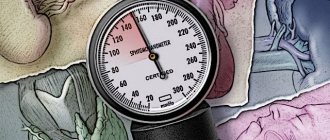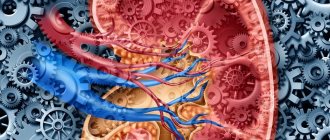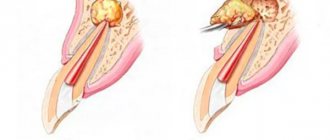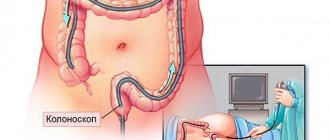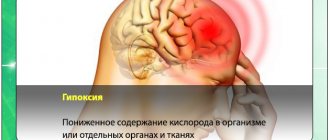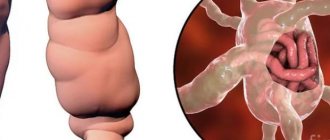Medical information is reliable Checked by Eremin Alexey Valentinovich
Oligophrenia or mental retardation is a deviation of a congenital or acquired type. It is characterized by a violation of the intellectual sphere, inadequate development of mental functions. One of the features of oligophrenia is a defect in the emotional-volitional spectrum. This leads to difficulties in the process of social adaptation.
Doctors have extensive experience working with patients of this type. In order for the result of correctional measures to have a pronounced effect, the treatment program is compiled individually for each person who contacts us. It takes into account the patient’s age, causes and symptoms of the disease, history of its manifestation, as well as other factors.
Degree of severity of oligophrenia
There are four degrees of mental retardation in total. Each stage of this condition is characterized by its own symptoms.
- Easy.
Assumes the development of intelligence at the level of 50-59 points. Mental characteristics correspond to the age of 9-12 years. Patients are able to take care of themselves in everyday life independently, they are trainable and communicative.
Good upbringing conditions created by parents allow such people to achieve good success in various activities. Characteristic features of this stage include a lack of initiative, slowness in action and decision-making. Such a patient constantly imitates adults, even if he has no family ties with them. The danger lies in the inability to suppress sexual desires. Actions can be unpredictable, causing harm to others.
- Moderate.
This degree is typical for people whose IQ is in the range of 35-59 points. The psychological age of the patient remains at 6-9 years. Patients experience difficulties in mastering new material; their speech is monosyllabic, sometimes completely unintelligible. Basic self-care skills are present, but mentally retarded people require care from loved ones. They can communicate through words and short sentences and are able to express their basic thoughts.
- Heavy.
Indicators of mental activity are in the range of 20-34 points. Intellectual potential corresponds to the age of 3-6 years. Patients understand some words addressed to them. It is possible to reproduce simple sentences, often this is a request to satisfy basic needs. Emotions manifest themselves at the level of joy and sadness, pleasure and irritability. Other sensations and feelings are inaccessible to them.
- Deep.
In terms of development, the patient does not exceed the level typical for a 3-year-old child. The maximum possible level of intelligence is 20 points. The patient cannot speak, cannot perform basic everyday activities, or care for himself. Thinking, memory, perception and other processes are practically not developed. Strong limitations in emotions make any communication with others impossible. The patient is unable to perform productive activities.
Among the characteristic features of this stage of mental retardation, the following signs are distinguished:
- communication is carried out through grimaces and simple gestures;
- patients are not able to feel mental pain, they do not cry or laugh;
- there is no play activity in principle; if a car or doll falls into the hands of such a child, they instantly break or are stuffed into the mouth;
- poor coordination of movements, chaotic swaying of the body in different directions is often observed;
- eating is complicated by a violation of the swallowing reflex, the patient cannot or does not know how to chew independently, there is a violation of the sense of smell and taste.
Such patients require round-the-clock care, so treatment of mental retardation is recommended in a hospital setting.
FEATURES OF CHILDHOOD DEMENTIA
Preschool age only forms a personality, which is characterized by many factors: developmental characteristics, temperament, individuality.
Only after the child goes to school can parents identify a developmental disorder. Such children practically do not master the program. It is not possible to attract the attention of oligophrenics and fix it on something. Difficulties arise with memorization and retelling—children suffering from ID are unable to retain received information in memory for a long time.
A “special” student usually does not understand the essence of the task and does not grasp the connections between things and phenomena. It is very easy to intimidate him in such a situation: you just have to shout, and the psychological trauma that follows the stress is inevitable.
Depending on the environment, such a child can develop into two completely different personality types:
- kind and sympathetic, ready to help at any moment, vulnerable and warm-hearted;
- embittered and aggressive, who, having no desires and feelings of their own, are subject to the negative influence of others.
A practicing psychotherapist shared the story of a boy who was doomed to mental illness while still in utero development. A dysfunctional mother carried a child in violation of all acceptable rules: she smoked, drank alcoholic beverages, and took psychotropic drugs. After the birth of the child, he was deprived of proper attention.
After some time, the visiting nurse noticed some mental underdevelopment of the baby: he could not hold his head up on his own and did not make any sounds. Thanks to the prompt and coordinated work of medical workers, the boy was saved. And at the moment it has practically adapted to modern living conditions.
A predisposition to mental illness or unacceptable behavior of a pregnant woman is a reason to warn her about the possible dementia of the unborn child.
However, a loving and caring mother who leads a healthy lifestyle and has absolutely no prerequisites for the occurrence of mental pathologies can also face the problem of dementia in her child.
Having noticed the first alarm bells, which are a definite reason for consultation, you must immediately contact a qualified specialist. This will give you the opportunity to deeply adapt your baby to society before the moment of his socialization.
Symptoms of oligophrenia
Patients experience not only a lag in the development of intelligence, but also a deterioration in the functions of higher mental activity. Moderate, severe and deep degrees of mental retardation are visible to the naked eye. Such a child looks tired and weakened. Concentration of attention is reduced, during educational activities he is lethargic and passive. If the teacher addresses him at this moment, most often no reaction follows.
Some patients exhibit unreasonable and prolonged anxiety. They are constantly in motion, but its nature is chaotic and multiple. Impulsivity in actions often leads to bad actions and attempts to harm others. The ability to self-control is reduced or absent altogether.
With mild mental retardation, the patient can master various professional skills, if they are simple enough. After some time, there is a decrease in performance, the person is distracted and cannot concentrate on one object or process.
This disease is accompanied by memory impairment. The patient remembers bright details that are attractive to him, and over time he can remember and talk about them. Most patients are diagnosed with speech underdevelopment. If this pathology develops in infancy, until the age of five such children do not speak, they only make a series of incoherent sounds. Hearing develops with great delay.
The developmental delay is noticeable at the physical level. Such patients often have facial and ear defects, an unusual head shape, and inadequate development of the genitals. In severe and profound forms of mental retardation, the mouth is constantly slightly open, and salivation is usually present.
Learning basic skills in these forms of oligophrenia is difficult. Caring for such patients is very difficult. They do not signal their physiological needs in time, satisfying them anywhere. It is impossible to teach a mentally retarded person how to help in everyday life. Contacting a psychiatric department allows you to temporarily shift the round-the-clock care of the patient to the shoulders of the medical staff.
Danger of mental retardation
By and large, mental retardation does not pose a threat to the life and health of either the child himself (unless it is a consequence of a serious illness) or those around him. In this case, it is more correct to talk about the difficulties and inconveniences that may arise for children with mental retardation and their environment.
Children with mental retardation find it more difficult to adapt to society and have learning difficulties. If mental retardation is not corrected, this can lead to loss of educational motivation and social maladjustment. Every year it will be more and more difficult for the child to be with peers, he will remain in the same class for the second year, his behavior will continue to remain at a low level of development.
As for others, if a child with mental retardation ends up in a regular class of a general education school, and no corrective measures are applied to him, then this may interfere with the learning process of other children. Children with mental retardation are often distracted in class and can distract the teacher and other children. They may play during class or get up and walk around the room without the teacher's permission. All this complicates the educational process and can cause a negative attitude towards such a student both from teachers and from classmates.
That is why it is recommended to send the child either to special classes, or to carry out correctional measures before the start of education, so that the child himself can easily adapt to the school environment and does not complicate the learning process of other children.
Causes of the disease
There are many factors that can become provocateurs in the development of mental retardation. Among the most common primary sources of pathology are:
- Exposure of a pregnant woman's body to poisons and chemicals. Hazardous substances cause intoxication of the body, are integrated into metabolic processes and lead to their disruption. This condition can develop under the influence of certain medications. If a pregnant woman takes them in doses that violate acceptable limits, the fetus’s body suffers first.
- Infectious diseases in the expectant mother. These include influenza, scarlet fever, rubella and others.
- A metabolic disorder that led to the development of a severe form of female dystrophy. Weight is rapidly decreasing, and the weight of the fetus is also becoming smaller. Organs and tissues can no longer perform their functions at the same level.
- Injury to the fetus that occurs as a result of a bruise, fall, or blow to the stomach of the expectant mother. Mental retardation often results from damage to the newborn during labor and the application of forceps.
- Retardation develops if the body of the mother, as well as the fetus, has been infected with parasites. The most dangerous disease is toxoplasmosis, transmitted from domestic animals (cows, pigeons, cats, dogs), as well as from mice and other small wild fauna.
- Hereditary predisposition. Mental retardation is transmitted at the genetic level. This disease develops if there is a chromosomal disease or incompatibility of the Rh factor of the blood of the mother and child.
- Inflammation of the meninges that occurs in a newborn often provokes mild or moderate retardation.
- Disturbance of protein metabolic processes, phenylketonuria.
- Poor ecology or exposure to radiation.
- Bad habits of one of the parents - alcoholism and drug addiction. It is especially dangerous if the mother is diagnosed with addiction. Typically, such patients do not stop taking alcohol or drugs even after learning about pregnancy.
- Poor nutrition, which leads to retardation in mental and physical development.
Therapy for this disease is possible when patients are admitted to an inpatient psychiatric hospital. Often they themselves cannot express their desire to undergo treatment, not realizing that they are really sick. Permission from relatives or guardians is required. Husband, wife, children, parents sign an agreement with the clinic, which describes the rights and obligations of each party.
How to prevent mental development problems
Good and effective prevention of childhood mental retardation is based on the early and comprehensive development of children. In general, medical experts advise the child’s parents to adhere to the following simple rules in order to prevent mental retardation.
- It is necessary to create optimal conditions for a woman’s successful pregnancy and childbirth.
- In a family where a small child is growing up, a favorable and friendly environment must be created.
- If the baby develops any diseases, they must be treated in a timely manner.
- From the first days after birth, the baby’s condition must be carefully monitored.
- From an early age, you need to constantly work with your baby, developing abilities and skills.
In the prevention of mental retardation in children, contact between mother and baby on an emotional and physical level is of great importance. The child will feel calm when his mother hugs and kisses him. Thanks to attention and care, the baby better navigates his new surroundings and learns to adequately perceive the world around him.
We would also like to recommend educational rugs - your child will definitely love them!
Diagnosis of mental retardation
Most cases can be recognized in early childhood through routine observation of the child. If his behavior goes beyond the norm, it is necessary to urgently contact a neurologist or psychiatrist.
The diagnosis of “mental retardation” is made on the basis of the collected medical history. During a personal conversation, the child's development is assessed. The doctor must know what the mother’s pregnancy was like and the list of diseases she suffered. It is important to inform him about genetic factors and cases of development of pathology in close relatives. Intentional distortion of information makes it difficult to make a correct diagnosis.
At this moment, it is possible to detect a violation of the patient’s speech and hearing, determine how developed the vocabulary is, the ability to think abstractly. Passing psychological tests allows you to determine the extent of the disease. The most common is the Wechsler test. It consists of a certain number of subtests, each of which is aimed at studying certain aspects of the patient’s mental sphere.
In the process of studying the level of memory development, the patient is asked to remember words and then reproduce them. The study of thinking involves understanding the meaning of proverbs, metaphors and other sayings. The causes of pathology can be identified using laboratory methods.
Criteria and symptoms of UO
Mental retardation means a stable, difficult to reversible slowdown in the development of the mental, intellectual, emotional and volitional sphere, which is characterized by the presence of congenital or acquired pathologies during life.
Significant limitations in skills that accompany dementia entail problems in the field of adaptive human behavior. This implies a low adaptability of the individual to the environment and difficulties in interacting with society.
The issue of intellectual disability must be considered in combination with the individual characteristics of the person. When diagnosing this mental disorder, one should also take into account the environmental conditions in which the patient is located. It is this that determines not only the individual’s adaptation in society, but also the psychological support that such people need throughout their lives.
Mental retardation in an adult is determined by the following criteria:
- deficiency of intellectual development. It manifests itself through difficulties in solving everyday problems, the inability to think abstractly, reason, and learn from experience;
- low level of adaptive behavior. It lies in the inability to adapt to cultural and social stereotypes generally recognized in society. People with mental pathology are little or not at all adapted to independent life and experience difficulties in the process of communication and leading social life. Therefore, they require regular help and support from others;
- Difficulties in the field of intellectual education and adaptive capabilities in oligophrenics develop throughout the entire period of the disease. Therefore, it is very important to diagnose the disease in a timely manner, the first symptoms of which can be seen in early childhood. The child’s further biological, psychological and social development must be structured in such a way as to minimize the worsening of pathology in adulthood.
In addition to the main signs indicating the presence of mental retardation, experts note auxiliary ones that can be noticed by people around the patient:
- inability to solve mathematical and logical problems, especially if it is necessary to additionally use reading, speech, etc. Concentration of attention and memory is low, which leads to a low degree of learning ability;
- a person often does not understand his thoughts and cannot clearly express them to others. Problems arise with communication - due to the lack of necessary experience in interpersonal relationships, it is difficult for him to get close to others and make friends. If it does happen that the patient is prone to excessive suggestibility and subordination to strangers;
- low level of independence - an individual may take poor care of himself, is unable to organize his leisure time, is often irresponsible when it comes to work, and does not know how to competently manage personal finances;
- poor behavior control. Outbreaks of aggressiveness, irritability, anger can arise due to various factors - discomfort caused by communication difficulties or the inability to express personal needs and desires, social isolation, social discrimination, etc.;
- severe cases of mental retardation in adults are accompanied by inhibited motor skills, slurred speech, and a low level of vocabulary;
- the rhythm of development of oligophrenics is slow, so mental retardation is most easily determined when the child is at school age;
- in the case of genetic intellectual disability syndrome, patients have a specific appearance;
- people with this pathology are more susceptible than others to mental, neurological and physical disorders (sleep problems, obesity, diabetes, etc.).
Treatment of mental retardation in Moscow
Therapy for this disease is predominantly symptomatic. After diagnosis, the specialist will select a suitable drug that can normalize the patient’s condition. Treatment of mental retardation in Moscow is carried out by psychiatrists and psychotherapists.
If mental retardation develops against the background of dysfunction of the thyroid gland, additional medications are iodine-containing drugs and hormones. With phenylketonuria, it is important to follow a diet and avoid foods that are hazardous to health.
The administration of nootropic drugs, B vitamins and amino acids can improve the processes of brain activity. Behavioral disorders are corrected with the help of antipsychotics and tranquilizers.
If the patient experiences increased activity, nervousness and multiple chaotic movements, sedatives are indicated. They will help you calm down and normalize your sleep and wakefulness patterns. Doctors often prescribe herbal-based medications that cannot be harmful to health or cause addiction.
For lethargy, nervous system stimulants with a “mild” effect are used. The dosage of all drugs depends on the stage of the disease and the individual characteristics of the body.
It is important to understand that mental retardation is not a death sentence for parents. Over time, they will learn to understand the needs of their child and respond to them correctly.
A timely visit to a psychologist will help the child adapt to living conditions in a group. Healthy children do not understand or accept those who have a lower level of intelligence. Against this background, conflicts arise from which the children themselves and their parents suffer.
A psychologist works not only with the patient, but with people close to him. He explains why violations manifest themselves the way they do and what needs to be done in a particular case. Corrective sessions allow you to develop new and improve existing self-care skills. For concomitant speech disorders, sessions with a speech therapist are indicated.
How to identify mental retardation disorders: signs and symptoms of delayed psycho-speech development
ZPRD, if it is caused by congenital factors, can begin to manifest itself at a fairly early age of the child.
Signs of delayed psycho-speech development:
- 4 months : the child does not respond to the words and gestures of the parents, does not smile (these are also symptoms of autism);
- 8–9 months : absence of babbling (repetition of identical syllables);
- 1 year : the child is very quiet, makes almost no sounds;
- 1.5 years : does not speak simple words (“mom”, “give”) and does not perceive them, does not understand when addressed by name or with a request; may also not be able to chew;
- 2 years : knows and uses a very limited set of words, does not repeat new words after others;
- 2.5 years : uses no more than 20 words, cannot form a phrase out of two or three words, does not understand the names of body parts and objects;
- 3 years : cannot form a sentence on his own, does not understand simple stories from adults. Speaks too quickly, “swallowing” endings, or too slowly, drawing out words. In response to an adult’s address to him, he can repeat what was said verbatim.
A child with PVD at any age may experience increased salivation and an always slightly open mouth. Such children are characterized by hyperactivity, increased aggressiveness, inattention, fatigue, and poor memory. The child thinks very slowly, has an undeveloped imagination and a narrow range of emotional manifestations, experiences great difficulties in communicating with peers, and therefore avoids them. Physically, such children are also poorly developed and may even have cerebral palsy.
Symptoms of ZPRD also manifest themselves in organic changes. When examined using electroencephalography (EEG) or the evoked potentials (EP) method, disturbances are detected in the left hemisphere (it is responsible for speech development).
In general, the longer a child experiences difficulties with speech, the more his mental and mental development is delayed. After all, the older children are, the more information they receive from what they are told in dialogues with others. This is another reason to start treatment for PVD as early as possible.
Reviews about the clinic
Here you can undergo a course of treatment for mental retardation in order to improve the patient’s adaptive capabilities. Often, the patient’s relatives do not have enough information about treatment methods, duration of therapy and stages of the disease. On this page you can read reviews from real people that contain information of interest.
We do not influence their content in any way; we constantly improve the quality of service and improve our qualifications. Any of our patients who want to express their opinion on the pages of our resource can leave a review. If you do not find the information you are interested in, call our call center. The specialist on duty will provide reliable information within a few minutes.


